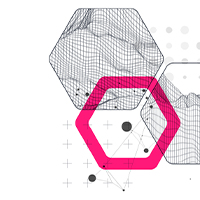Inside the open access movement: Unleashing the potential of oncology research
In the hallowed halls of scientific publishing, a revolution is quietly unfolding – one that, if delivered upon, promises to fundamentally reshape the landscape of clinical research. At its core lies a simple yet profound idea: the practise of exchanging knowledge and ideas, building upon discoveries of the past, and sharing further findings with the wider community, should be freely accessible and unencumbered by the cultural and financial barriers that have long impeded its flow. This is the essence of the open access movement.
The origins of open access can be traced back to the late 1990s, when the Internet was rapidly becoming the great democratiser of information. As researchers grappled with the transformative potential of this new and exciting publishing medium, a growing chorus of voices began to question the traditional model of subscription-based access to scientific literature. Why, they wondered, should the dissemination of knowledge be constrained by paywalls and restricted access when the marginal cost of sharing it with an ever-growing audience was negligible?
“In an era of print, journals were printed and distributed to people who were interested. Each time you added a reader, you added cost, so you charged them to subscribe to the journal,” explains Theodora Bloom, an executive editor for The British Medical Journal (BMJ). "Once journals are online, the cost is mainly associated with producing the article and getting it online. The additional cost of having more readers is almost nil. There is an opportunity to allow everyone to read, research, and use it and to put the charges where the costs are incurred, which is at the point of producing the articles.”
The answer, or so it seemed, lay in a radical reimagining of publishing models – where the costs of publication would be borne upfront, with the resulting research made freely available to all.
The promise and challenges of open access in oncology
While the idea of a paper being open or closed may seem relatively black and white, there are actually multiple different tiers of open access publishing, each offering varying levels of accessibility and reuse rights.
Gold open access represents the most comprehensive form, where articles are immediately and freely available upon publication, often under a Creative Commons license that allows liberal reuse and distribution. Other options include green tier open access where authors self-archive their work in institutional or subject-specific repositories, sometimes after an embargo period set by the publisher, and hybrid tier, where subscription-based journals offer authors the option to make individual articles openly accessible for a fee. Lastly, diamond or platinum open access describes journals that publish open access content without charging authors or readers, typically funded by institutions or consortia.
“Subscription access to journals has usually been managed by libraries, the large institutional systems for payment, whereas, if you're collecting an individual article processing charge for each article that's published, that's a transaction the author has to get involved in,” says Bloom. “Increasingly, institutions are taking out big agreements that cover open access fees, but, for some authors, finding out whether your grant covers that payment and handling the payment, that's just a logistical challenge. In an area like oncology, research is very largely funded, people are being given grants and other means of payment to do the research.”
The benefits of this approach are manifold, particularly in fields like oncology, where timely access to the latest research is crucial. By embracing open access, researchers can not only accelerate the pace of discovery, but also foster unprecedented levels of collaboration and knowledge-sharing, transcending geographical and institutional boundaries.

"Open access is not just about reading research for free," says Bloom. "It's about the ability to download, text mine, and use computational methods that are becoming increasingly important. The idea is that you pay for the publishing upfront, and then you have a fully reusable resource in perpetuity.
Yet, despite its promise, the journey towards open access in oncology research has not been without its challenges. Several significant hurdles stand in the way of widespread adoption. The deeply ingrained culture of prestige associated with publishing in traditional, closed-access journals can be difficult to dislodge, even in the face of compelling arguments for openness. Transitioning an industry that has operated under a subscription model for centuries requires careful navigation of funding mechanisms, payment models, and author fees.
And then there is the issue of content.
Addressing reproducibility issues in cancer research
One of the most compelling arguments for open access in oncology research is its potential to address the ongoing reproducibility crisis in science. A substantial proportion of published work cannot be independently validated or replicated, a problem that has significant implications for the progress of cancer research and the development of new treatments.
Tim Errington, senior director of research at the Center for Open Science, found this out the hard way during his time working on the Reproducibility Project: Cancer Biology, an eight-year effort to replicate experiments from high-impact cancer biology papers published between 2010 and 2012.
Errington and his team were tasked with preparing replications of 193 experiments from 53 papers, a seemingly straightforward process - or so he thought.
“It was really, really hard. There were a lot of challenges, more even than I was prepared for,” he says.
Only 2% of the designated 193 experiments had open data. Zero contained completely described protocols. Looking to navigate the missing information challenge, the team reached out to the authors behind the original papers. Some (41%) of those original authors were more than happy to assist, others (32%) were not helpful (or unresponsive). But even with additional information, the results highlighted a real issue in reproducibility.
“Of the findings that we could replicate, that the average effect size – so the mean difference – was 85% smaller than the original,” he explains. “That's like an animal study showing a 20-day difference in survival in the original finding from placebo to some intervention, which is pretty standard, to us finding the same effect, but it only is three days.”

So, how does open access help to address this issue? For Bloom, there is one clear advantage.
“Once papers are open, you get more and more people reading them and trying to reuse them and saying, ‘Wait a minute, I haven't got all the information I need, all the underlying data to be able to build on this study’,” says Bloom. “In a way, papers have become more bloated, they have more figures and tables and supplementary files, but still not necessarily providing good access for reuse by other people.”
Of course, as Errington and his team found, being able to access the research paper through open access publishing is just one step in the journey towards open science.
“Open access is crucial, but it's not enough,” he says. “You need to be able to expose the rest of that process downstream, which this project illustrated. It's not enough just to publish a paper. You have to give us access to everything behind that paper. Open access is the first step, which is, 'Can I see the paper?', without having to have a paywall or institutional access, which is essentially somebody paying for it. I still need more past that.”
Final thoughts
The ethical implications of open access in oncology research cannot be overstated. By promoting data transparency, enabling replication studies, and facilitating collaborative efforts, open access principles align with the ethical imperative of ensuring that cancer research, which directly impacts human lives, is held to the highest standards of reproducibility and scientific integrity. This transparency can foster a culture of accountability and rigorous peer review, reducing duplication of efforts, and accelerating the pace of discovery in oncology.
As we look to the future, the imperative for open access in oncology research only grows stronger. In a world where knowledge is power, and where the stakes are quite literally life and death, the choice seems clear: to embrace openness, to tear down the barriers that impede progress, and to unleash the full potential of human ingenuity in the fight against cancer.
As Bloom eloquently reminds us: "We don't need to argue any longer about whether it's a good idea to share the results with everyone. That case has been made. We simply have to make it happen." And happen it must, for the sake of patients, researchers, and the boundless frontiers of medical knowledge that are waiting to be explored.
About the author
Eloise McLennan is the editor for pharmaphorum’s Deep Dive magazine. She has been a journalist and editor in the healthcare field for more than five years and has worked at several leading publications in the UK.
Supercharge your pharma insights: Sign up to pharmaphorum's newsletter for daily updates, weekly roundups, and in-depth analysis across all industry sectors.
Want to go deeper?
Continue your journey with these related reads from across pharmaphorum
Click on either of the images below for more articles from this edition of Deep Dive: Oncology 2024












